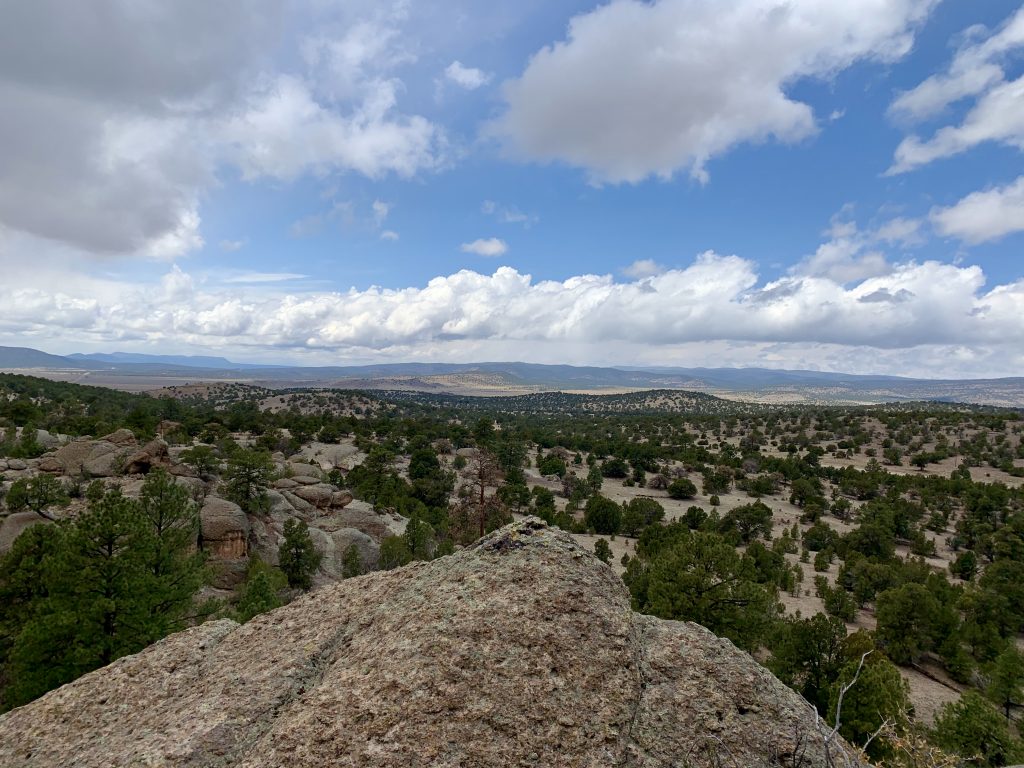I have circumnavigated most of the Greater Gila Bioregion six times now. I’ve sped south on I-25, past the water mis-management incubus that is Elephant Butte reservoir, swinging west along the endlessly windy, unrivaled circuitry of highway that leads up and over the Black Range, stopping in Silver City to chat with a conservation partner over an espresso at Javalina Coffee House before tackling the sweeping north westerly arch of Highway 180, past the Cliff-Gila Valley where at least one black hawk and a whole assemblage of neotropical birds flit about on the banks of the wild Gila River.
Sometimes I’ll wipe my brow and steady my hands on the wheel for the harrowing and unparalleled driving adventure that is the trip to the old mining town of Mogollon, through the sprawling burn scar of the Whitewater-Baldy Fire, creeping past the silhouette of Bearwallow Peak above the northern boundary of America’s first experiment with capital “W” Wilderness, the Gila Wilderness, to my favorite campsite along Turkey Cienega, where sometimes I see wolves, and sometimes I don’t. But the fact that their shadowy presence lurks in the canyons and along the ridgelines is enough to keep me returning, through winter storms and summer monsoons, the fiat of their survival a magnetic force of attraction.
If the Mogollon expedition is not on the itinerary, I’ll swing west again, crossing the stateline and the San Francisco peaks into Arizona, circumventing the iconic outline, oft traced by Aldo Leopold, of Escudilla Mountain. And then, finally, beginning an easterly jaunt back into New Mexico, past the dusty buildings that comprise Quemado and Pie Town, where the Pie Town Pies Cafe is reinvigorating the namesake. Across the expansive Plains of San Agustin, past the most creatively named astronomical radio observatory, the Very Large Array (VLA), reemerging north-bound on I-25.
The scope and scale of this landscape never ceases to electrify the engine within me that drives this desire to protect place. The fact that there is no short-cutting this circumnavigation because there are no major roads bisecting the landscape is another exceptional feature. We don’t get wildness of this size in this country any longer. Ecosystems are relentlessly fractured by highways, housing developments, mines, oil and gas extraction, and other forms of disruptive human encroachment. We increasingly press ourselves into and onto the land in ways that disturb, displace, or otherwise irreparably interrupt the delicate web of connection that sustains complex systems of life. And we are all feeling the effects.
Connectivity and corridors are the new gold standard for conservationists seeking to promote resilience for species in the face of the climate catastrophe and biodiversity collapse. The Greater Gila exemplifies both of these traits. And with further protections, we can ensure that the wolves, the Gila trout, the loach minnow, the narrow-headed garter snake, and the Mogollon death camas, all of which are on the threatened and endangered species list, can maintain the opportunity to thrive alongside us humans who love the landscape and find solace in its spaciousness. By supporting initiatives like tribal co-management, and the bold vision for our public lands expressed by our new Secretary of the Interior, Deb Haaland, we can elevate and amplify those voices that have been excluded from the conversation for far too long.
The Greater Gila is the perfect landscape to demonstrate a new model of land management, one that adequately addresses the crises we face as a nation, and seeks to repair the historical oppressions we’ve perpetuated as a people. We can feel the momentum building. The time for change is now. Let’s make the Greater Gila the grounds to manifest all we know ourselves to be.
